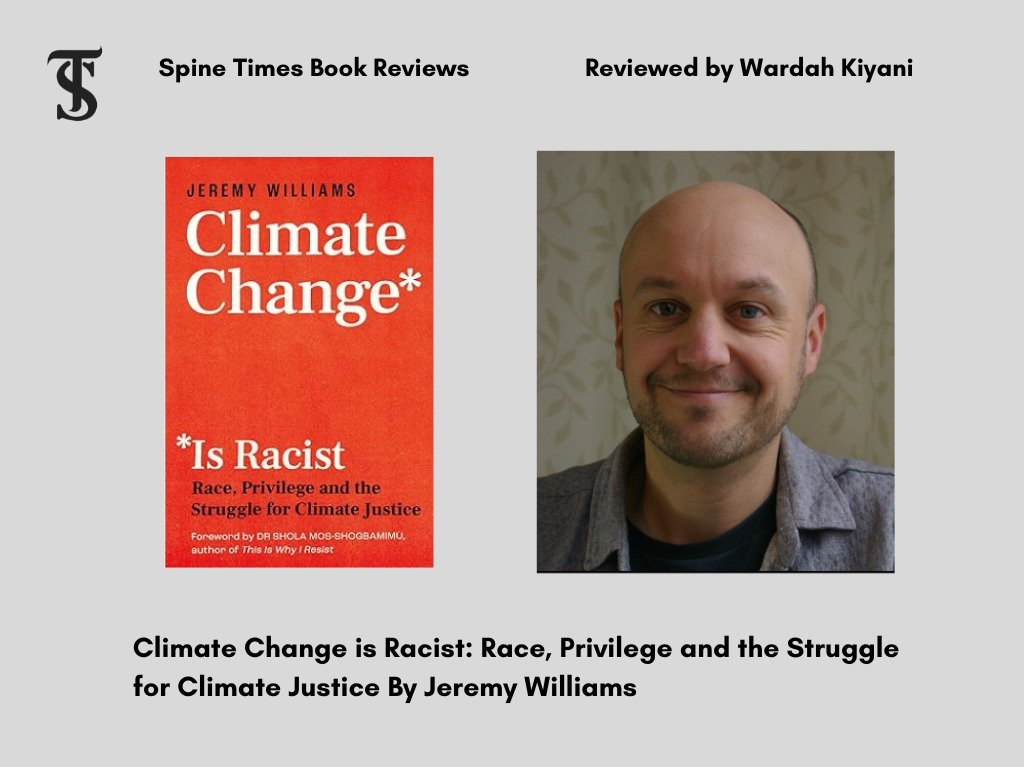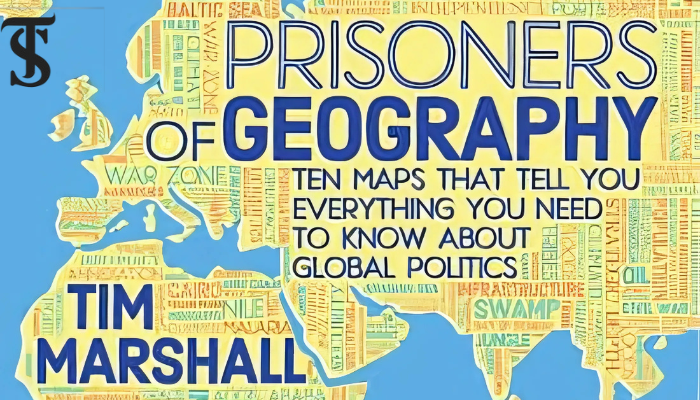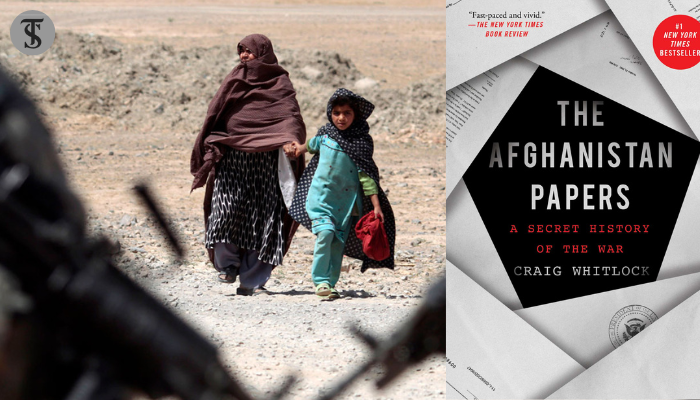Climate Change is Racist: Race, Privilege and the Struggle for Climate Justice

In libraries full of brilliantly researched and jargon-heavy books on the axis of climate change, social justice and inequality, Jeremy Williams book on the topic stands apart. Written in the everyday vernacular, William’s writing on climate change and systemic racism is not only academically insightful, but is also easy to read and comprehend. To this end, the famous quote “if you can’t explain is simply, you don’t understand it well enough” attributed to Einstein is a testament to William’s expert knowledge on the subject matter. As the book progresses, the depth and breadth of the book’s arguments amplify; however, William’s writing style maintains its accessibility and clarity, making even the complex of climate concepts understandable to a wide audience hailing from both academic and non-academic backgrounds. For this reason, the book makes a strong contender for bridging the gap between academic research and public understanding, and if marketed correctly, can expedite informed discussions and generate a new-found zeal for climate action.
On account of the book’s content, Williams puts pen to paper in order to make the case for some strong convictions. Among the overarching ideas presented by Williams is that climate change is not an isolated issue; it also has deep bearings in the idea of social justice as well. As the author sails through a myriad of scenarios where climate change and social injustice have wreaked havoc of disproportionate and unprecedented scale on communities at the peripheries, it becomes evident that William’s claims are staunchly supported by real life events. For example, the author brings to light the USA’s use of the Marshall Islands as their nuclear testing site in the 1940’s and 50’s. For a low-lying island state that has virtually zero global contribution to climate change and looks nothing more than crumbs on the map, USA’s strong-arming of the island has increased its vulnerability to climate change exponentially. This adds weight to William’s claim that climate change and social injustice go hand in hand, and the latter cannot be ignored in debates surrounding the former.
As the chapters progress and the author dives deeper into the uneven power dynamics of climate change decision-making, he maintains that vulnerable communities are often excluded from the upper echelons of institutional and policy-making, and face the double burden of climate adversities since they lack access to resources to mitigate and adapt to environmental changes. In this regard, Pakistan’s example serves as an excellent case in point, which is the fifth most vulnerable country to climate change, despite its global contribution to the greenhouse gases (GHGs) being less than one percent of the global emissions. Nonetheless, foreign climate policy prescriptions expect Pakistan to spend substantially more of its national budget on mitigation rather than on adaptation, even when Pakistan’s contribution to GHG’s are significantly less in relation to the extreme brunt of the climate wrath that it faces (GoP & UNDP, 2017). This reasserts the author’s standing on climate change as more than just an ecological concern, but also one of uneven power and wealth dynamics.
William accents the inextricable links between race, class, gender and other enablers of oppression, which tango together to create systemic injustices. As such circumstances serve as the optimal breeding ground for climate induced inequalities, Williams’ acknowledgement of the multifaceted nature of oppression, which transcends simplistic explanations based solely on environmental factors is one of his book’s greatest strengths.
In tracing the origins of climate change and injustice, Williams analyses history in retrospect and asserts that environmental racism has a long-standing legacy dating back to the colonial misadventures of exploitation and dispossession, further extrapolating how these historical injustices still play a pivotal role in shaping contemporary environmental inequalities. These assertions have long been in play even before Williams penned them from a different angle, and can be found in the works of scholars such as Alfred W. Crosby (1991) who wrote extensively on the ecological imperialism of the early colonial conquests and how they built their home economies on wealth looted off their colonies rich in minerals, timbers and other agricultural products.
Furthermore, William’s understanding of climate colonialism is also supported by environmental historians such as Ramachandra Guha (2000), who in his book The Unquiet Woods: Ecological Change and Peasant Resistance in the Himalaya examines how colonialism imposed Eurocentric notions of land use and resource management marginalized indigenous knowledge and practices, reinforcing racial hierarchies and detaching people from their own lands. However, it is also pertinent to note that while colonial legacies may have paved the way for contemporary environmental inequalities, other factors such as globalization and neoliberal economic policies also play significant roles. With the proliferation of multinational corporations (MNCs) in the twentieth century and ever-expanding supply chains, pollution and environmental degradation have been outsourced to developing countries, perpetuating patterns of environmental injustice.
As Williams continues to write extensively on capitalism, white supremacy and the role of neoliberal governance in marginalizing the already disenfranchised communities, the author does a fine job of reviving the influential works of critical scholars such as Herbert Marcuse and Theodore Adorno. This leads one to believe that Williams has drawn significant inspiration from the Frankfurt School of critical theory, most of whose proponents align environmental destruction with consumer capitalism. In this regard, Nestle’s bottled water operations perfectly encapsulates how the capitalist machinery works against nature’s bounty. By extracting water from natural sources in areas where communities rely on them for their own water needs, to limiting access to clean water for local residents, and then contributing directly to environmental degradation accruing from carbon emissions associated with the supply chain processes of the curated Nestle’s bottled water; the modus operandi of this MNC exemplifies the critique put forth by Williams on how capitalism’s greed for wealth creation over social and environmental well-being hard-hits the communities existing at the peripheries.
Moreover, one of the most astounding features of the book remains its reverberation of an intersectional approach to climate justice. William accents the inextricable links between race, class, gender and other enablers of oppression, which tango together to create systemic injustices. As such circumstances serve as the optimal breeding ground for climate induced inequalities, Williams’ acknowledgement of the multifaceted nature of oppression, which transcends simplistic explanations based solely on environmental factors is one of his book’s greatest strengths. By emphasizing on how multiple forms of privilege and marginalization converge, the author is able to present a more holistic analysis the root causes of climate-induced inequalities and social injustices.
Perhaps, what is most astounding about this book is that for a writer whose niche lies in writing less serious books for children, Jeremy Williams’ Climate Change is Racist surprisingly passes the test of academic rigor. Williams draws upon a wide range of scholarly sources, empirical research, and theoretical frameworks to support his argument throughout the book. The book is a careful amalgamation of interdisciplinary literature on environmental justice, intersectionality, colonialism, and systemic inequality. Williams builds upon the arguments of key academicians, including eminent scholars such as Kimberle Crenshaw and Dipesh Chakrabarty, backing his writing with strong fundamental concepts and debates. In addition to this, William’s clever use of interesting anecdotes from history, insightful case studies, and real-world examples add merit to his arguments, enriching the book’s content and enhancing its credibility as a scholarly work. In addition to this, Williams’ addition of a clearly referenced and extensive bibliography at the end of the book makes it incredibly easy for readers to cross-examine and verify information utilized therein, and makes his resources transparent for his readers to fact-check themselves.
In retrospect, William Jeremy’s “Climate Change is Racist: Race, Privilege, and the Struggle for Climate Justice” is a riveting read which delivers a compelling message all too relevant in today’s world. As William gets to the bottom of environmental injustice taking place in different parts and communities of the world, he pieces together various accounts of oppression and exploitative historical legacies which all point unanimously towards the urgent need for climate action. His approach to story-telling is refreshingly candid, at times humorous and devoid of heavy academic jargons, which makes his book an easy page-turner. Along the way, Williams harnesses his powerful story-telling and expert analysis into challenges his readers to confront the inequalities that arise due to climate change, and urges them to work together towards a more equitable future. At the end, more than just laying the record straight about how today’s institutions and structures work against those that are the down-trodden in the society, the book also serves as a call to arms- a rallying cry for justice and a roadmap for a better tomorrow.
Wardah Kayani
The writer is the associate editor of the Spine Times.






Your ideas absolutely shows this site could easily be one of the bests in its niche. Drop by my website QU5 for some fresh takes about Cosmetic Treatment. Also, I look forward to your new updates.